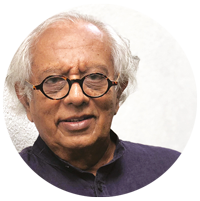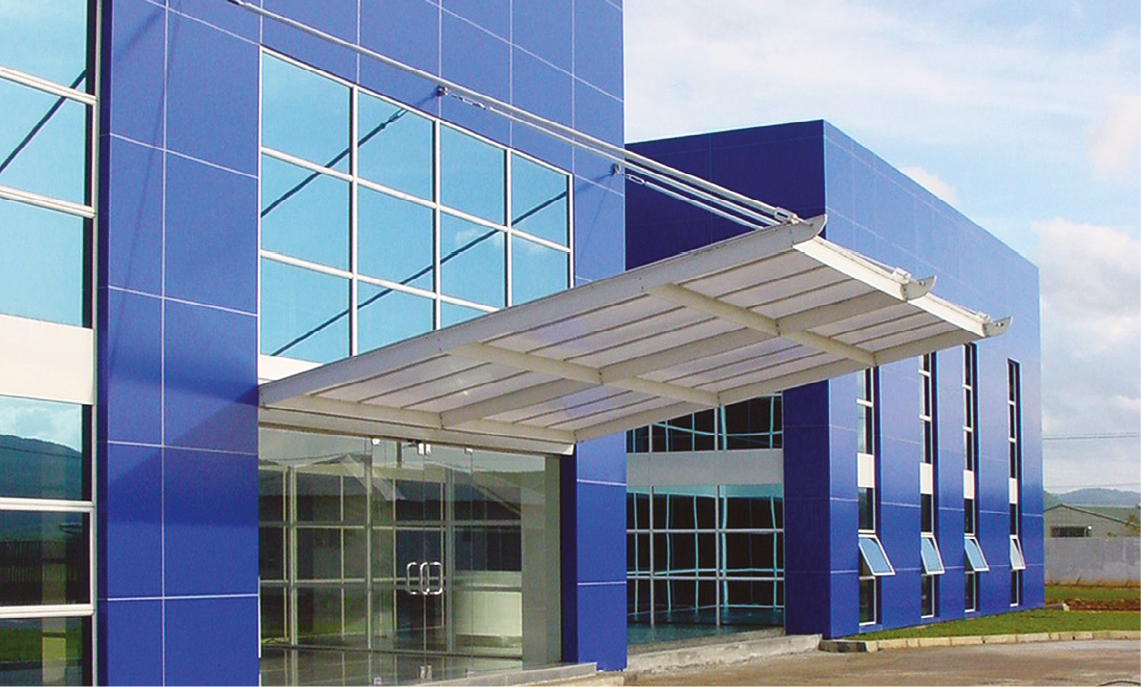
Bringing balance to the
architectural ethos
Tilak Samarawickrema in conversation with Lashani Ramanayake

With a culturally rich background that ranges from Sri Lanka to Italy, Tilak Samarawickrema is an accomplished architect, an artist, and interior and graphic designer, as well as an animator who crafts his work using a futuristic lens.
Deftly creating distinct pieces that defy the status quo, his work includes line drawings (several of which have now been transformed into brass wire sculptures) and colourful tapestries, which were influenced by ancient Sinhalese art and the German Bauhaus movement.
A pioneer in establishing his own Bauhaus style in Sri Lanka, Samarawickrema has worked to modernise traditional design. A teacher at heart, he continues to share his knowledge and thinking with students of architecture.
Q: Which principles are integral to designing urban spaces?
A: In terms of interiors, I design in keeping with the primary function of a space. Function determines the elements that follow such as furniture and decorative elements; and if space permits, plants as well. The various views one can expect to enjoy when looking out must be visualised prior to planning for an interior.
Q: How do architects balance design, functionality and aesthetics in today’s context?
A: Balancing these elements is rudimentary for an architect. An instance of harmonious integration of these aspects was seen when a reputable software company used one of my tapestry aesthetics for the first time as a floor carpet.
This entailed placing together carpet tiles that matched the colour palette of the tapestry. Moreover, it illustrated the versatility and groundbreaking aesthetics of items such as wall hangings, which can be used unconventionally too instead of being deployed only for decorative purposes.

Q: What’s the scope for architecture as a profession in Sri Lanka?
A: There’s tremendous talent in Sri Lanka and it’s reflected in the work of young architects who are graduating from local universities, as well as other institutions that specialise in architecture.
Furthermore, the island’s geography is an added advantage since designing in the tropics opens up new vistas for aspiring artists and architects who are producing very interesting work. This is seen in the hospitality sector and numerous residential buildings.
I would venture to say that neighbouring India may even admire us for the opportunities we can offer, which young Indian architects may not have access to.

Q: As 2020 unfolds, what would you like to see in terms of construction in the next decade?
A: Colombo holds a certain charm especially for those of us who grew up here. However, the excess of high-rise buildings is radically transforming the city’s skyline. Therefore, it’s imperative that haphazard construction is strictly controlled and people aren’t allowed to build such high-rises without proper planning.
In my view, there’s inadequate legislation governing construction in Sri Lanka. Though terms such as ‘development’ and ‘progress’ are regularly used by the construction industry, this hasn’t been strictly regulated.
Furthermore, the local transport system needs radical change through the introduction of monorail systems and similar services to support infrastructure development. This can be accomplished by a government that’s sensitive to design and I’m optimistic about the future.


